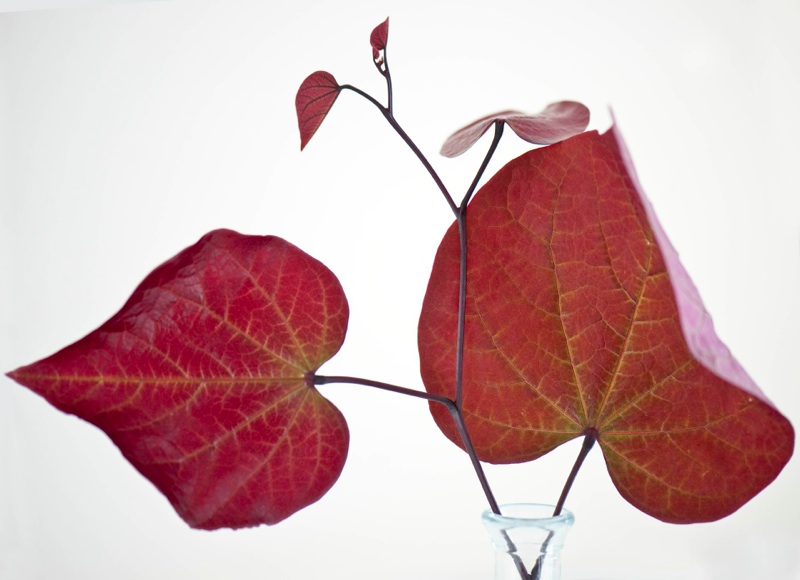 By this time of the year, most folks have generally forgotten our spring blooming Eastern redbud (Cercis canadensis). In the springtime it is quite showy, producing clusters of rose-colored pea-like flowers along its branches. The spring is truly the time of the year for the redbud to show off, but after the blooms fade, the redbud is forgotten. Oh, it’s a nice enough tree in the summer months, growing from twenty to twenty-five feet with interesting branching patterns. During these summer months children play with the flat, beanlike seedpods that look a lot like snow peas. But besides all this the tree disappears inconspicuously in our landscape.
By this time of the year, most folks have generally forgotten our spring blooming Eastern redbud (Cercis canadensis). In the springtime it is quite showy, producing clusters of rose-colored pea-like flowers along its branches. The spring is truly the time of the year for the redbud to show off, but after the blooms fade, the redbud is forgotten. Oh, it’s a nice enough tree in the summer months, growing from twenty to twenty-five feet with interesting branching patterns. During these summer months children play with the flat, beanlike seedpods that look a lot like snow peas. But besides all this the tree disappears inconspicuously in our landscape.
There is a cultivar of the redbud, though, that extends the tree’s ornamental value well into the summer months. Its trade name is Forest Pansy. This cultivar is much like the native version we have in our woods but with a significant difference. In the spring of the year along with the usual redbud blooms, the tree covers itself with beautiful purple-red leaves that shimmer with light as breezes move through the garden. This is accomplished because of the contrast between the top of the leaf, which is a deep maroon, and the underside of the leaf, which has more of a silver hue. I’ve always been envious of my fellow European gardeners who have the maroon foliage “Purple Beech”or Fagus sylvaticato bring these deep colors into their sylvan world. We’ve had few trees that would do the equivalent. Forest Pansy gets us part-way there.
In residential landscapes the redbud is known as a harbinger of spring, blooming along with azaleas, dogwoods and our springtime bulbs, and Forest Pansy is just as pretty and showy as any redbud when it comes to its spring bloom. I really like Forest Pansy. Its form is distinctive, as well. It has a bit of an umbrella shape that flattens out on top when grown under full sun, making it become more broad than tall. Forest Pansy, like other redbuds, is very good for an urban landscape. Because of its small size ( 20’ ), it works well as a street tree where large oaks and pines won’t do.
Along with Forest Pansy there are other cultivars of redbuds. Most distinctive are the white versions. There is an Oklahoma redbud and a Texas redbud that set themselves apart as white blooming cultivars. For some time now, Forest Pansy has been my favorite. It‘s showy even now as summer’s heat comes upon us, months after the other redbuds have finished their spring performance. Look for the redbud Forest Pansy in your local nursery. This tree has pushed Cercis canadensis, our old fashion redbud, into a summertime ornamental.
Forest Pansy: its color brings deep color into our sylvan world.
